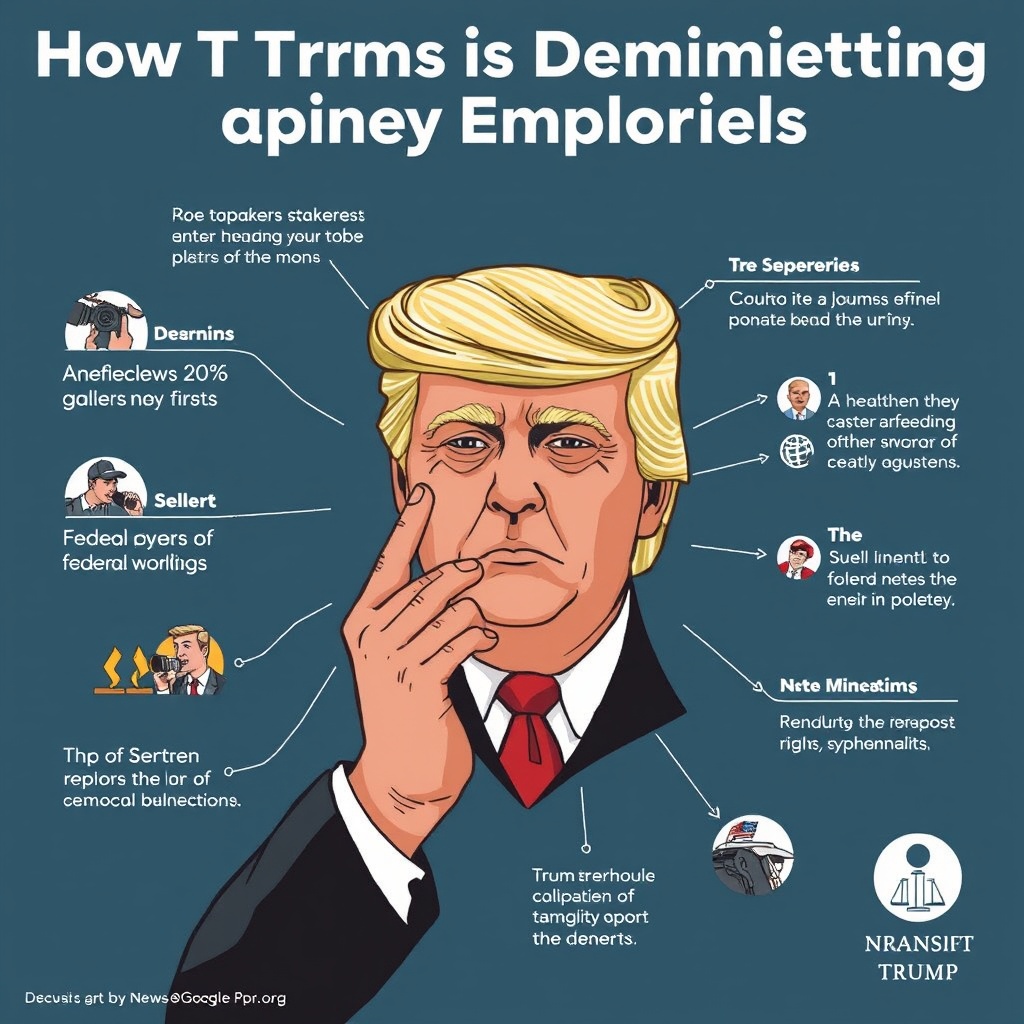Introduction
The Trump administration has been at the forefront of a concerted effort to dismantle federal employee unions, a move that has been met with widespread criticism and resistance from labor unions and workers alike. The most recent development in this saga has been the elimination of collective bargaining rights for over one million federal workers, a decision that has been challenged in court by unions seeking to protect the interests of their members. This article will delve into the details of the Trump administration's assault on federal employee unions, exploring the implications of these actions and the potential consequences for workers, unions, and the federal government as a whole.
The Background: Understanding Federal Employee Unions
Federal employee unions have a long history in the United States, dating back to the early 20th century. These unions have played a crucial role in protecting the rights and interests of federal workers, negotiating better wages, benefits, and working conditions on their behalf. The largest federal employee unions include the American Federation of Government Employees (AFGE), the National Federation of Federal Employees (NFFE), and the National Treasury Employees Union (NTEU), among others. These unions have traditionally been recognized by federal agencies, with whom they engage in collective bargaining to reach agreements on employment terms.
Collective bargaining rights for federal employees were formally established by the Civil Service Reform Act of 1978, which aimed to improve the efficiency and effectiveness of the federal workforce by promoting fair labor practices and protecting employee rights. However, the Trump administration has sought to roll back these protections, arguing that they hinder the government's ability to manage its workforce efficiently.
The Assault on Federal Employee Unions: Key Actions and Implications
The Trump administration's efforts to decimate federal employee unions have been multifaceted, involving a series of executive orders, policy changes, and legal challenges aimed at undermining the power and influence of these unions. Some of the key actions include:
-
Executive Orders: In 2018, President Trump issued a series of executive orders aimed at limiting the power of federal employee unions. These orders made it easier for agencies to fire employees, restricted the use of official time for union activities, and curtailed the scope of collective bargaining. The orders were met with immediate resistance from unions, which argued that they were an overreach of executive authority and violated federal law.
-
Ending Collective Bargaining Rights: The most recent and significant move has been the elimination of collective bargaining rights for over one million federal workers. This decision, which affects a substantial portion of the federal workforce, has been particularly contentious. Unions have sued to block the move, arguing that it is illegal and violates the rights of federal employees to engage in collective bargaining.
-
Policy Changes and Budget Cuts: The Trump administration has also implemented policy changes and budget cuts that have negatively impacted federal employee unions. For example, reductions in agency budgets have led to fewer resources for union activities, while policy changes have made it more difficult for unions to represent their members effectively.
The implications of these actions are far-reaching and significant. By undermining federal employee unions, the Trump administration is not only affecting the livelihoods of federal workers but also potentially compromising the efficiency and effectiveness of the federal government. Federal employee unions play a critical role in ensuring that the government is able to attract, retain, and motivate a high-quality workforce. Without strong unions, federal agencies may struggle to recruit and keep talented employees, which could have serious consequences for the delivery of public services.
Resistance and Legal Challenges: The Unions' Fight Back
Federal employee unions have not taken the Trump administration's actions lying down. Instead, they have launched a series of legal challenges and public campaigns aimed at blocking the administration's efforts and protecting the rights of their members. Some of the key strategies include:
-
Lawsuits: Unions have filed lawsuits challenging the legality of the Trump administration's actions, including the executive orders and the elimination of collective bargaining rights. These lawsuits argue that the administration's moves are in violation of federal law and the constitutional rights of federal employees.
-
Legislative Action: Unions have also sought legislative solutions, lobbying Congress to pass laws that would protect federal employee unions and restore collective bargaining rights. While these efforts have been met with resistance from Republican lawmakers, they reflect the unions' determination to fight back against the Trump administration's assault.
-
Public Campaigns: Finally, federal employee unions have launched public campaigns to raise awareness about the impact of the Trump administration's actions on federal workers and the public services they provide. These campaigns have included rallies, petitions, and media outreach, all aimed at building public support for the unions and pressure on lawmakers to act.
Conclusion
The Trump administration's efforts to decimate federal employee unions represent a significant threat to the rights and interests of federal workers, as well as the effectiveness of the federal government. By eliminating collective bargaining rights, restricting union activities, and implementing policy changes and budget cuts, the administration is undermining the foundations of federal labor relations. However, federal employee unions are fighting back, using legal challenges, legislative action, and public campaigns to protect their members and preserve the integrity of the federal workforce. As the battle between the Trump administration and federal employee unions continues, the future of federal labor relations hangs in the balance, with significant implications for workers, unions, and the public services that federal agencies provide.


Leave a comment